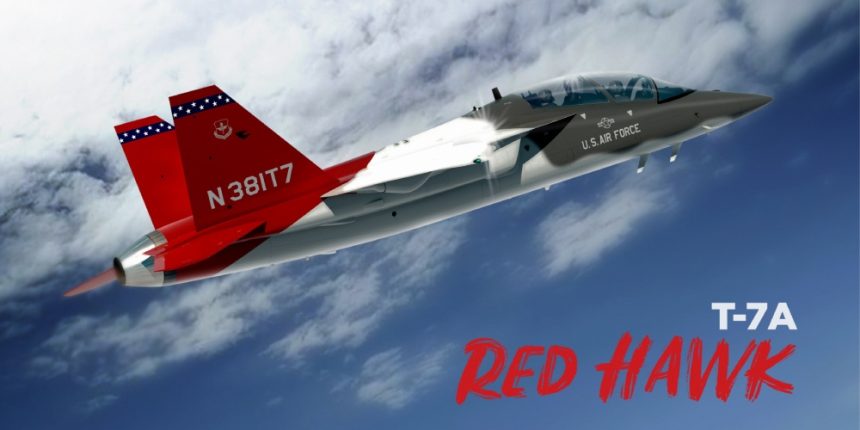The name, Red Hawk, honors the legacy of Tuskegee Airmen, and pays homage to their signature red-tailed aircraft from World War II.
On Sept. 16, acting Secretary of the Air Force Matthew Donovan announced the T-X has been officially named the T-7A “Red Hawk” during the Air, Space and Cyber conference underway at the National Harbor.
“The name, Red Hawk, honors the legacy of Tuskegee Airmen, and pays homage to their signature red-tailed aircraft from World War II.
The name is also a tribute to the Curtiss P-40 Warhawk, an American fighter aircraft that first flew in 1938 and was flown by the 99th Fighter Squadron, the U.S. Army Air Forces’ first African American fighter squadron” says an official news release.
“The P-51 and P-40 are some of the most iconic fighters of their time. Likewise, the T-7A will be the staple of a new generation of aircraft.”
The T-X is the name of the a new advanced jet trainer developed by Boeing Defense, Space & Security in partnership with Saab Group, selected on Sept. 27, 2018 as the winner of the T-X program to replace the Northrop T-38 Talon.
The new aircraft is powered by a single General Electric Aviation F404 engine (the same engine used by the Saab Gripen C/D and legacy F/A-18) and has a design similar to the F/A-18, with leading-edge root extensions (LERX) and twin tails that can provide high performance training for pilots that will fly US front-line fighters. The cockpit features a touchscreen large-area display (LAD), digital Up-Front Controller (UFC) and standby instruments, Hands On Throttle And Stick (HOTAS) controls and a low profile Head-Up Display (HUD), much like the F-35 cockpit or the proposed cockpits for Boeing’s F/A-18E/F Block III and F-15X and Saab’s Gripen E. The aircraft is slated to offer advanced training capabilities, including data links, smart weapons, simulated radar and LVC (live virtual constructive) capabilities.
Generally speaking, the most advanced trainers have human-machine interface (HMI) that is quite similar to the one of the most modern front line multirole aircraft (such as the 5th gen. F-35 or F-22, or previous gen. aircraft like the Rafale, Gripen or Eurofighter Typhoon). These front line jets have become extremely simple to fly, but quite complex to manage. Hence the need for trainers that can facilitate the transition, making the pilots more comfortable with the management of the glass cockpit, radar, weapons etc: pilots of 5th generation aircraft are more system administrator than legacy pilots.
According the U.S. Air Force, the first T-7A aircraft and simulators are scheduled to arrive at Randolph AFB, Texas, in 2023 as a replacement for the venerable T-38C. In addition to replacing the Talon trainer fleet the new advanced jet trainer will facilitate a more integrated transition to the Air Force’s F-35A Lightning II Joint Strike Fighter.








